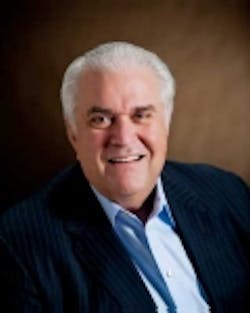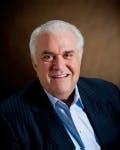The never-ending journey: the clinicians we are and the clinicians we could be
By Richard E. Mounce, DDSEndodontics is hard work. Achieving an excellent endodontic result is the result of observing time-honored principles. Irrespective of the means of achieving the principles, the goals of treatment do not change. Inherent in properly carrying out these principles is the need to assess the risks of treatment, as well as foresee potential problems. This preoperative assessment of clinical challenges and development of a treatment plan are key ingredients to obtaining the highest standard of results. For example, if the clinician is accessing a crown on a non-vital, curved and calcified lower molar, anticipating the risk that this clinical event implies requires diligent planning of the steps needed to complete the case to the highest standard. Making access in such a tooth means that when the pulp chamber is encountered, there will likely not be the sensation of falling into the chamber. As a result, the clinician will have to keep a visual and mental watch on the depth of vertical access insertion to avoid furcal perforation. The value of a surgical operating microscope (SOM, Global Surgical, St. Louis, Mo.) in such a scenario cannot be overstated. Once the canals are located, the early management of the orifices is critical to achieving and maintaining apical patency. Using orifice openers forcefully in this clinical case could easily lead to canal blockage. Instead, aside from just creating a “toe hold” at the canal orifice with orifice openers, the clinician should use small hand K files (#6, #8, #10, and #15 hand K files) diligently and work them apically until they spin freely and create the glide path to the estimated working length. Only after this manual preflaring should rotary nickel titanium (RNT) files be brought into the tooth. In any event, this description is to illustrate to the clinician that treatment should be planned preoperatively and is not a one-size-fits-all proposition. There is a tremendous benefit to practice carried out in extracted teeth. Such practice can develop tactile muscle memory in managing blockages, ledges, and calcified canal negotiation, among a host of other potential clinical challenges during treatment. This muscle memory can be brought back into the clinical operatory. One such tactile advantage of practice in extracted teeth is manifest in the management of MB2 canals. Knowing how much pressure to place on a precurved #6 hand K file to attempt to move apically is not intuitive, and each canal requires a different amount of pressure for its negotiation. Some MB2 canals will allow a #6 or #8 hand K file to drop easily into the lumen of the canal, and others will require numerous insertions in various angulations to discover the canal path. In addition, some MB2 canals may appear to stop cold at approximately mid-root. Practice in extracted teeth can go far to alert the clinician to the possible strategies needed to manage these events and also know when such a canal can be determined to be non-negotiable. Shaving the wall of an extracted tooth root can tell the clinician if the root would have been negotiable under any circumstances and also, what would have been required to make it so. Finally, there is an intangible factor that separates the master clinician from something less — an insatiable desire to improve. After some period of time, improvements in skill occur in small increments rather than leaps and bounds. Clinicians can give in to inertia to remain tied to their given strategies and concepts without considering that there might be a better way, or that some of the dogma they are married to is not true or is only part of the truth. For example, clinicians using a single cone obturation technique with gutta percha or working without a rubber dam are missing out on two independent and very important clinical concepts that drive endodontic success. Clinicians using a single cone technique are not filling all the ramifications of the canal space with the core obturation material (gutta percha), and secondly they are not bonding the obturation (using RealSeal* in the master cone or obturator form, RealSeal One Bonded Obturators) with its proven advantages in reducing coronal microleakage relative to gutta percha. Working without a rubber dam is below the legal and ethical standard of care and needlessly risks harming the patient and invites microbial contamination of the canal. The desire for mastery, one component of continual improvement, is a never-ending journey to fill in the gaps between the clinician we are and the clinician we could be. I welcome your feedback.*SybronEndo (Orange, Calif.)
Dr. Mounce is the author of the non-fiction book "Dead Stuck," “One man's stories of adventure, parenting, and marriage told without heaping platitudes of political correctness.” Pacific Sky Publishing. DeadStuck.com. Dr. Mounce lectures globally and is widely published. He is in private practice in endodontics in Rapid City, S.D.

